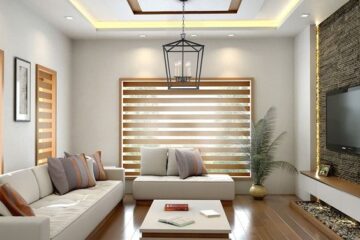
Open, minimalist floor plans are trending in home design, and builders and designers should keep the space simple and sustainable. Remodeling contributor Kacey Bradley presents four factors to think about when designing minimalist modern spaces:
1. Minimalist Modern Structure
In architecture, the minimalist modern home leaves more to the imagination at first glance, vastly different from Art Deco, Victorian, and other ornate design aesthetics. The real question is: How open is too open? The minimalist modern home favors glass panels in place of walls, where neighbors can see into your client’s kitchen or living room, and the home’s structure looks more like a Rubik’s cube than a cozy chateau guests would hide away at—you don’t need an algorithm to find your way around this one with open floor plans. The beauty of the minimalist modern home is that it invites in nature. Glass panels offer a closer look into the beauty of nature, but reclaimed wood and sustainable flooring choices are important also.
2. Minimalist Modern Rooms
The floor plan of a minimalist modern room is open, inviting homeowners and guests to move throughout their home to experience a uniform flow. The idea is that the layout of the home creates a larger story, told with its cohesive look. How do the elements relate to one another? Rooms may have walls, but it’s as if the entire home is still open and airy. Parts of walls may be cut out to let light in, and skylights are a classic choice to view the stars or let the sunlight stream in. Rooms don’t have to be large, which is an aspect of minimalism and the tiny home movement. Built-in shelving or the creative use of push-to-open cabinets creates a seamless look in the home, without sacrificing function.
3. Minimalist Modern Decor
Minimalist modern home decor and furnishings have evolved over the last few decades to showcase fun modern pieces, geometry, and striking colors, with the clean lines of technological age. There are over five decades of modern decor to explore and integrate into the client’s home. Today, the minimalist modern home is experiencing an eco-conscious renaissance, where home construction and remodeling is focused on energy efficiency and sustainable materials. Homes and offices are outfitted to be more energy efficient, from roofing and wiring to the use of Energy Star appliances. Vintage furniture is reclaimed or built from sustainable materials, such as bamboo or glass. Simple furniture doesn’t have to match but enhances function without appearing drab. Uniformity rules the kitchen with stainless or brushed steel appliances.
4. Minimalist Modern Landscape
Natural woods, reclaimed woods, and other natural elements should be utilized in outdoor areas. Bamboo screens outline a cozy area for entertainment, while benches constructed from untreated palette wood lend clean lines and hidden storage to a patio.
[Source:-builderonline]


